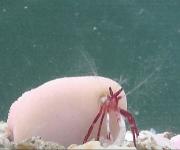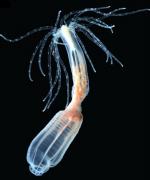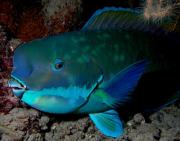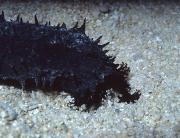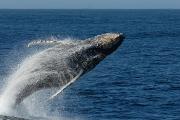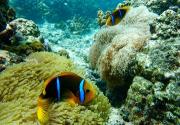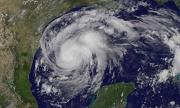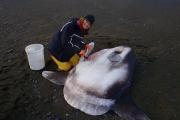They say that home is where the heart is, and that is literally true with hermit crabs — they carry the shell that houses them wherever they go. Since hermit crabs steal their shells from other creatures, usually sea snails, their shells do not grow with them. So a hermit crab only leaves its shell when it has outgrown the home and moves into a larger one, sometimes even killing the shell’s current resident to acquire its new dwelling.
Articles
The Marine Science Institute's monthly column, Science and the SeaTM, is an informative and entertaining article that explains many interesting features of the marine environment and the creatures that live there. Science and the SeaTM articles appear monthly in one of Texas' most widely read fishing magazines, Texas Saltwater Fishing, the Port Aransas South Jetty newspaper, the Flour Bluff News, and the Island Moon newspaper. Our article archive is available also on our website.
One of the most effective treatments for a venomous bite or sting in humans is anti-venom, which is manufactured from the venom itself. But what if a creature’s venom changes over time? That’s exactly what scientists recently found in the starlet sea anemone, and it raises important questions about the way humans use venom, especially in medicine.
Farmers don’t typically grow crops on all of their land simultaneously – they rotate crops and leave some land fallow so soil can recover and remain fertile. It turns out some herbivorous reef fish also understand not to over-harvest their food. They give it time to recover, which benefits them as well as the coral on which their food grows.
You may have heard that starfish can regrow arms they’ve lost, but imagine a creature that can regrow nearly all its internal organs. Sea cucumbers have no brain, eyes or heart, but when they have to protect themselves, they turn themselves inside out and eject their intestines, reproductive organs and respiratory tissues. But these soft tube-shaped animals can regrow all that tissue within about six weeks. Researchers hope studying the sea cucumber’s remarkable regeneration abilities will offer insights for human medicine.
Humpback whales arrive into the world at a whopping 26.5 feet long, but they have no time to waste in growing even bigger. Their mothers care for them during their entire first year, but they still must survive a 5,000-mile migration across the open ocean before their first birthday. That means fattening up as much as possible while feeding in Antarctic or Arctic waters during the summer. As winter approaches, humpbacks head to tropical waters and breed.
Most turtle-headed sea snakes throughout the Indian and Pacific Oceans have black-and-white banded bodies—unless they swim in city waters. Instead of the distinctive white rings around their bodies, the snakes that live closest to industrial areas have much darker bodies. In fact, turtle-headed sea snakes in the polluted waters around New Caledonia, in the Pacific, are often entirely black. These city sea snakes aren’t making a fashion statement. Having darker skin, scientists have learned, gives them an edge over their banded brethren when living near large human populations.
They didn’t know what they would find when they set off for a month at sea on May 15, 2017. But when 40 scientists returned from trawling the deepest waters off the coast of Australia, they had a haul that would make Charles Darwin, the adventurous explorer of the Galapagos Islands, envious. Among meat-eating sponges, flesh-eating crustaceans, zombie worms, blind sea spiders and a toothy dragonfish to haunt your nightmares, scientists found a fish without a face.
Nemo may have been interested in exploring the great big ocean, but his dad Marlin’s attachment to their anemone is the norm for real clownfish. Sea anemones protect clownfish—and the eggs clownfish lay at the anemone’s base—against predators. But scientists recently learned that an anemone can only protect clownfish if the anemone itself remains healthy. When higher water temperatures stress anemones, clownfish fertility suffers.
Harvey, Irma, Jose, Maria… the 2017 hurricane season has been intense, and it’s not just humans trying to recover from the destruction. Like forest fires, hurricanes wreak havoc on habitats, but can also promote ecological renewal — if corals and other undersea creatures are not already under simultaneous stresses.
New discoveries in the ocean never end, but sometimes even the ocean’s largest animals can evade scientists. It takes perseverance, a bit of luck and sometimes help from everyday people to find elusive new creatures. PhD student Marianne Nyegaard and a team of researchers from Murdoch University in Australia spent four years searching for a new species of sunfish, or mola, the largest bony fish in the world.

